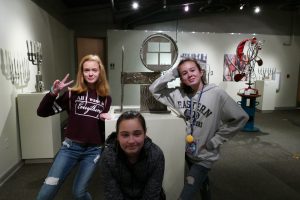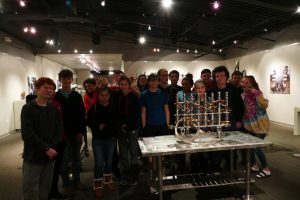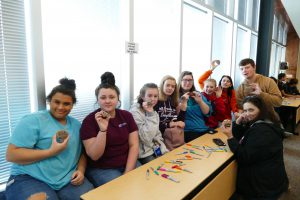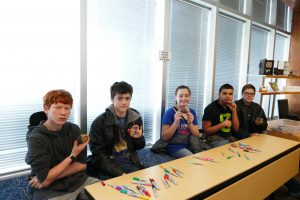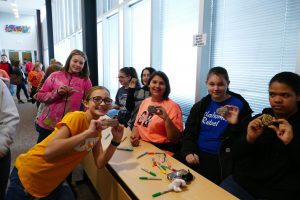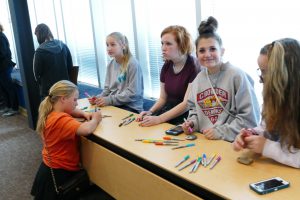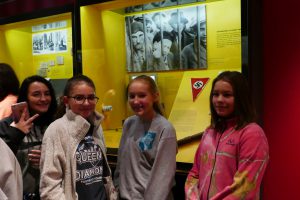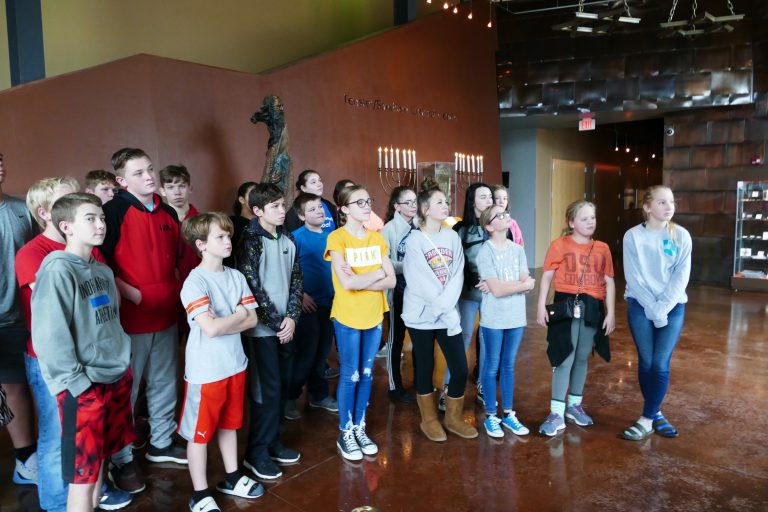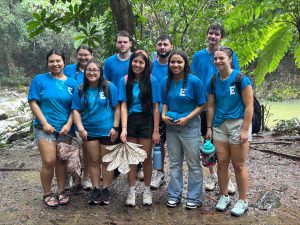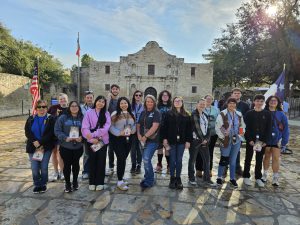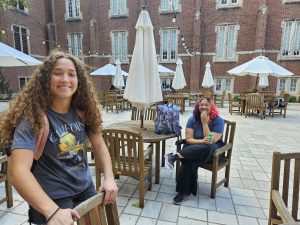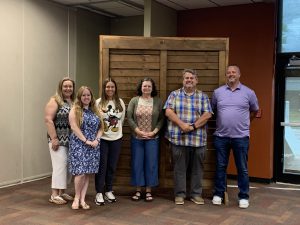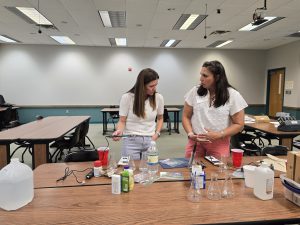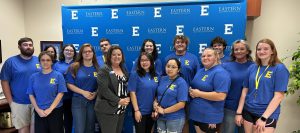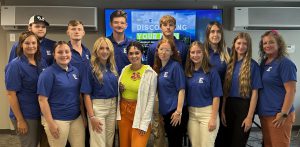Forty-nine Crowder GEAR UP students recently traveled to Tulsa to tour The Sherwin Miller Museum of Jewish Art. Dennis Chambers and Pam Johnson greeted students; both have been docents at the museum for many years and were extremely knowledgeable of the Jewish culture and history. Students experienced the full tour of the Holocaust and Judea sections. The museum is ever growing with renovations in progress both inside and out.
The Sherwin Miller Museum of Jewish Art in Tulsa was founded in 1966 as the Gershon & Rebecca Fenster Museum of Jewish Art, through the cooperative efforts of several local Jewish families. Their purpose was to bring the local Jewish community an understanding of its heritage through artifacts, as well as to serve as a resource center for non-Jews to learn about Jewish history and culture. The Museum’s founding coincided with the acquisition of a collection of Judaica facilitated by Sherwin Miller, the museum’s first curator. In 2000, the Fenster Museum was renamed the Sherwin Miller Museum in recognition of Mr. Miller’s vision.
Crowder seventh and eighth grades were divided two groups to spread out and see the various exhibits. Seventh graders began the tour on the first floor with Chambers explaining the history and significance behind the stained glass art in the Maurice E. Gimp Lobby. The three pieces each depict a biblical story that seemed difficult; but once everyone in the story trusted in God, everything ended up working out for the better. As they ventured upstairs they stopped in the Herman and Kate Kaiser Holocaust Exhibit to see some of the historical artifacts, from around the world, related to the Holocaust. Students have been studying the Holocaust in their social studies classes and were excited to see first-hand some of the historical pieces about which they had been learning.
Eighth graders started the tour upstairs in the Jewish History and Culture Gallery. Johnson led them through the traditions of both a boy and a girl growing up in the Jewish faith. The museum’s upper level displays the permanent collection of art, artifacts and antiquities, showcasing the history of the Jewish people from the pre-Canaanite era through the settling of the Jewish community in Tulsa and the American Southwest. Johnson described the Diaspora, Jewish practices, ceremonies, observances, and overall heritage and Torah. She also explained Hanukah which is often referred to as the “Jewish Christmas” but she told the story of Hanukah so students could learn when it was started and why it’s important to remember each year.
In 168 BC, Greek soldiers were ordered to do away with the Judaism faith and the Jewish people. Thousands were massacred and the Greek soldiers erected an altar to Zeus and sacrificed pigs within the sacred walls of the Jewish temple. In an attempt to “cleanse the temple,” Jewish followers rebuild the altar and lit the menorah. They witnessed what they believed to be a miracle. Even though there was only enough oil to keep the menorah candles burning for a single day, the flames continued flickering for eight nights. This wondrous event inspired the Jewish sages to proclaim a yearly eight-day festival known as Hanukah.
Lastly, students were led through the Rosetta and Avrorn Brodsky Fine Art Gallery where artist George Tobolowsky’s “Menorahs of Steel” are currently on showcase. The sculptures feature abstract and Judaic metal sculptures from steel and stainless steel “found objects”. It is all recycled steel. Tobolowsky’s work is from bulky industrial metal castoffs that he scours scrap yards and fabrication plants to find. He rarely alters these metal pieces but instead works to fit the individual scraps together—much like the pieces of a jigsaw puzzle—into balanced compositions.
After touring the exhibition, students made a contribution to the exhibit themselves. The museum provided flat stones with the names and ages of children who were killed during the Holocaust. In total 1.5 million children died. Crowder students were able to decorate the stones around the child’s name and age. The decorated stones were added to a display in the Kinder-Stone Children Sculpture Project outside the museum in Liberators’ Park for future visitors to see.
“I love to take students on field trips where they can see first-hand the subjects they have been studying in class,” said Rachael Ranallo, GEAR UP Education Coordinator. “The partnership between Crowder and GEAR UP has allowed us to explore the lesson deeper and give students a true experience to go with the text.”
The field trip was sponsored by Eastern Oklahoma State College’s GEAR UP program. Participating schools take two field trips each academic year—one to tour a college or university and one that is cultural/educational in nature. In 2017, Eastern recently received a $17 million federal GEAR UP grant and will serve over 3,000 students in 39 area schools for seven years.

